-
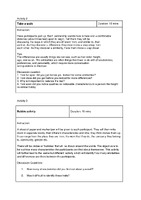 Activites with instructions
Activites with instructions The document outlines a series of interactive group activities designed to promote teamwork, communication, and self-awareness among participants. Each activity includes specific instructions, durations, and discussion questions aimed at encouraging participants to explore their similarities and differences, enhance their observational skills, and engage in collaborative problem-solving. Activities range from physical tasks like the "Web of Wool," where teams must guide a blindfolded member to untangle a web, to reflective exercises such as the "Bubble Activity," where individuals identify personal characteristics. The document emphasizes the importance of understanding diversity and fostering positive interactions within groups through structured engagement.
-
 Appreciating Diversity_Activity
Appreciating Diversity_Activity The document outlines an interactive activity designed to help participants explore their similarities and differences through a physical exercise where they move closer or further apart based on their discoveries. It emphasizes the importance of recognizing both differences, such as physical traits, and similarities, which often relate to personal characteristics and preferences. The activity includes discussion questions aimed at fostering reflection on how these dynamics affect teamwork and collaboration, as well as a scoring system that rewards participants for various aspects of diversity, such as different birth states or languages spoken. This approach encourages participants to appreciate diversity while understanding its impact on group interactions and objectives.
-
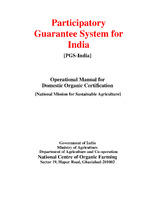 Operational Manual for Domestic Organic Certification
Operational Manual for Domestic Organic Certification The PGS-India Operational Manual outlines the procedures and standards for establishing and maintaining Participatory Guarantee Systems (PGS) for organic farming in India. It emphasizes the importance of forming local groups of farmers who commit to organic practices, participate in peer reviews, and attend regular meetings to ensure compliance with organic standards. The manual details the steps for group registration, the roles of regional councils, and the certification process, which includes peer appraisals and the sharing of knowledge among members. It also highlights the necessity for farmers to convert their entire land and livestock to organic within a specified timeframe and provides guidelines for addressing non-compliance. Overall, the manual serves as a comprehensive guide for farmers to achieve and maintain organic certification through community involvement and mutual support.
-
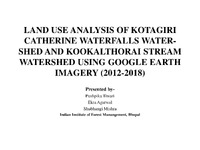 LAND USE ANALYSIS OF KOTAGIRI
CATHERINE WATERFALLS WATER
SHED AND KOOKALTHORAI STREAM
WATERSHED USING GOOGLE EARTH
IMAGERY (2012 2018)
LAND USE ANALYSIS OF KOTAGIRI
CATHERINE WATERFALLS WATER
SHED AND KOOKALTHORAI STREAM
WATERSHED USING GOOGLE EARTH
IMAGERY (2012 2018) The document presents a study focused on analyzing land use changes in the Kotagiri and Kookalthorai areas of Tamil Nadu, utilizing Google Earth imagery and GIS tools from 2012 to 2018. The research aims to understand community perceptions regarding these changes, document traditional practices related to water sources, and assess the impact of tourism and agricultural practices on land use. Findings indicate a significant increase in built-up areas due to tourism, a reduction in tea cultivation, and a decrease in tree cover, alongside concerns about water availability and agricultural productivity. The study highlights the importance of community engagement and the use of modern mapping tools in environmental research.
-
 Landuse / Land cover dynamics study in Nilgiris district part of Western Ghats, Tamilnadu
Landuse / Land cover dynamics study in Nilgiris district part of Western Ghats, Tamilnadu The document presents a study on the dynamics of land use and land cover in the Nilgiris district of Tamil Nadu, focusing on changes from 1973 to 2009. It highlights significant transformations in land use patterns, particularly the increase in urban areas and the decline of agricultural and forest lands, attributed to factors such as population growth, commercialization, and climate change. The research employs remote sensing and GIS techniques to analyze these changes, revealing a notable rise in dense forest areas while open forests and agricultural lands have decreased. The findings emphasize the urgent need for effective land management strategies to address environmental degradation and ensure sustainable development in this ecologically sensitive region.
-
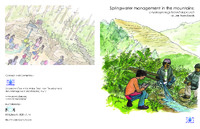 Springs_User Handbook_ACWADAM's
Springs_User Handbook_ACWADAM's This user handbook focuses on the management of springwater in mountainous regions, emphasizing the importance of hydrogeological science in understanding and protecting groundwater resources. It advocates for a community-based approach to springshed management, highlighting the need for local involvement in monitoring and maintaining recharge areas, which are determined by geological factors rather than administrative boundaries. The handbook outlines a systematic methodology for assessing spring discharge, classifying spring types, and developing management protocols that include protecting vegetation and ensuring clean recharge areas. It stresses the significance of educating local communities about the role of hydrogeology in sustaining springwater and the necessity of ongoing data collection to evaluate the impact of management practices on both water quality and community livelihoods.
-
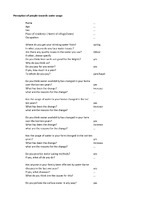 Perception of people towards water usage
Perception of people towards water usage The document presents findings from a survey regarding water usage and environmental concerns in a specific area. It highlights issues such as waste disposal methods, the impact of agricultural practices on water quality, and the presence of wildlife near water sources. Respondents reported changes in water availability and quality over the past decade, with many indicating an increase in both household and farm water usage. The survey also addresses the perception of bore wells, the occurrence of waterborne diseases, and the influence of local development on natural resources. Overall, it reflects community attitudes towards water management and environmental sustainability.
-
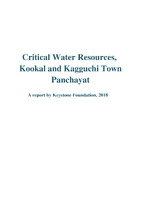 Kookalthorai Drinking water sources
Kookalthorai Drinking water sources The Keystone Foundation provides an overview of the drinking water resources in Kookal and Kagguchi Town Panchayat, highlighting the critical need for restoration and management of these sources due to their depletion and contamination. It details the reliance of local communities on a limited number of wells and bore wells, which often run dry, especially during summer months, and discusses the adverse effects of invasive species and poor waste management on water quality. The report emphasizes the importance of conservation efforts, such as restoring spring-shed areas and improving infrastructure, to ensure a sustainable water supply for the residents. It also addresses the broader implications of groundwater depletion on the local ecosystem, including the impact on wildlife and the hydrological cycle, urging immediate action to mitigate these challenges.
-
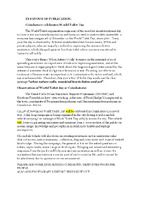 World Toilet day_Coimbatore _Press release
World Toilet day_Coimbatore _Press release The press release announces the celebration of World Toilet Day in Coimbatore on November 21, organized by the Tamil Nadu Urban Sanitation Support Programme and Keystone Foundation, highlighting the importance of sanitation and access to clean toilets. This year's theme, "When Nature Calls," aims to raise awareness about the ecological issues caused by untreated human waste and emphasizes the need for proper fecal sludge management. A mobile campaign will engage the public by gathering their opinions on sanitation and promoting understanding of the sanitation value chain, which includes safe containment, collection, and treatment of waste. The initiative seeks to normalize discussions around sanitation, encouraging community involvement and awareness of its significance in daily life.
-
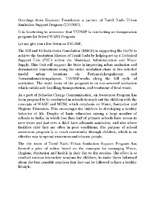 School Program Inaguration_NN_Press note
School Program Inaguration_NN_Press note The press note announces the inauguration of the School WASH Program by the Tamil Nadu Urban Sanitation Support Program (TNUSSP), which is supported by the Bill and Melinda Gates Foundation. This initiative aims to improve urban sanitation in Tamil Nadu, focusing on non-sewered sanitation and the safe management of fecal waste. A key component of the program is an awareness initiative in schools to educate children about water, sanitation, and hygiene (WASH) practices, promoting healthy behaviors. The program addresses the lack of access to safe water and adequate sanitation in many schools, with the goal of reaching the community through children. The inauguration event is scheduled for February 28, 2019, at the Periyanaickenpalayam Town Panchayat Office in Coimbatore, and the organizers invite media coverage and support for this important cause.
-
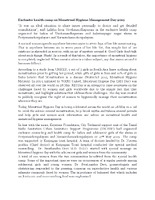 Menstrual Hygiene Management Day 2019
Menstrual Hygiene Management Day 2019 The document discusses the significance of Menstrual Hygiene Management Day, celebrated on May 28, to raise awareness about the challenges women and girls face due to menstruation, which is often surrounded by stigma and misinformation. It highlights an exclusive health camp organized for women and adolescent girls in slums, where medical professionals provided consultations on menstrual hygiene and reproductive health, addressing common concerns such as irregular periods and the importance of a balanced diet. The document also emphasizes the negative impact of societal taboos on women's health and education, noting that many girls drop out of school when they begin menstruating due to inadequate sanitation facilities. Additionally, it touches on the environmental issues related to the disposal of sanitary products and the need for open discussions to empower women and girls regarding their menstrual health.
-
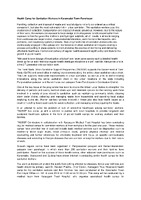 Health camp _karamadai _Press Note
Health camp _karamadai _Press Note The document discusses a health camp organized for sanitation workers in Karamadai Town Panchayat, highlighting the health risks these workers face due to their exposure to unhygienic conditions and harmful gases while managing waste. It emphasizes the need for regular healthcare and monitoring to improve public health among this vulnerable group. The Tamil Nadu Urban Sanitation Support Programme (TNUSSP) has partnered with local hospitals to provide free medical camps, offering essential health services such as blood pressure and sugar level checks, which have benefited over 200 workers and their families. The success of these camps has encouraged other nearby towns to initiate similar health initiatives, reflecting a growing recognition of the importance of healthcare for sanitation workers.
-
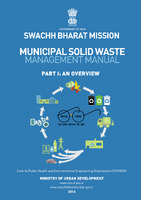 Municipal Solid Waste Management Manuel_Part I,II,III
Municipal Solid Waste Management Manuel_Part I,II,III The manuel outlines the challenges and strategies for managing municipal solid waste (MSW) in urban India, emphasizing the need for effective waste management systems due to the increasing urban population and waste generation. It discusses various funding sources for waste management, including government grants, public-private partnerships, and loans from development agencies, while highlighting the importance of stakeholder involvement and community participation in planning and implementation. The manual presents a structured approach to developing a municipal solid waste management plan, which includes assessing current situations, identifying gaps, and establishing clear action plans for waste collection, treatment, and disposal. It also emphasizes the significance of recycling, composting, and energy recovery from waste, alongside the integration of informal waste management sectors to enhance resource recovery and reduce environmental impacts. Overall, the document serves as a comprehensive guide for urban local bodies to improve their waste management practices and ensure sustainable urban development.
-
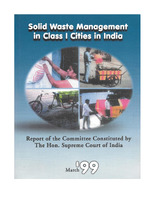 Solid Waste Management_Supreme Court Report_March_99
Solid Waste Management_Supreme Court Report_March_99 The document outlines comprehensive recommendations for improving solid waste management in urban areas, emphasizing the need for organized waste collection, segregation, and processing. It suggests implementing door-to-door collection systems, utilizing NGOs and private sector participation to enhance efficiency, and establishing designated disposal sites for hazardous waste. The report also highlights the importance of community involvement, proper training for waste management personnel, and the adoption of environmentally friendly practices like vermi-composting. Furthermore, it calls for local bodies to adopt simple technologies and set achievable standards to gradually improve waste management services over time, ensuring that municipalities can meet the needs of their communities effectively.
-
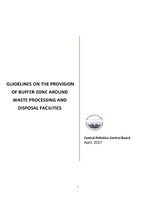 Final Guidelines on Buffer Zone
Final Guidelines on Buffer Zone This document, published by the Central Pollution Control Board in April 2017, outlines the necessary provisions for establishing buffer zones around solid waste processing and disposal facilities in India. It emphasizes the importance of maintaining a no-development zone to minimize environmental and public health risks associated with waste management operations. The guidelines define key terms such as buffer zone, separation distance, and green belt, and recommend specific distances and land use practices to ensure effective waste management while addressing community concerns. Additionally, the document highlights the regulatory framework guiding these practices and the need for local authorities to collaborate with pollution control boards to implement these guidelines effectively, ultimately aiming to enhance the aesthetic appeal and operational safety of waste management facilities.
-
 Tamil Nadu Urban Sanitation Support Program_SKCAS_VM
Tamil Nadu Urban Sanitation Support Program_SKCAS_VM The document discusses the critical importance of sanitation, which encompasses the safe management of human waste and solid waste, including hazardous materials. It highlights the severe health implications of inadequate sanitation, noting that poor sanitation contributes to diseases such as cholera and diarrhea, and is linked to malnutrition, with millions lacking basic sanitation facilities. The document outlines the components of a full cycle sanitation system, emphasizing the need for safe toilet usage, effective waste treatment, and the prevention of groundwater contamination. It also references legislative measures aimed at improving sanitation practices and reducing manual scavenging, underscoring the collaborative efforts of organizations like the Bill and Melinda Gates Foundation and the Tamil Nadu government in addressing these challenges.
-
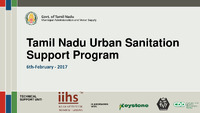 Tamil Nadu Urban Sanitation Support Program
Tamil Nadu Urban Sanitation Support Program This presentation focuses on the Tamil Nadu Urban Sanitation Support Program, outlining the sanitation value chain, which includes user interfaces, containment, collection, treatment, and disposal of waste. It discusses the importance of safe toilet usage, the prohibition of manual scavenging, and various treatment systems, highlighting a proposed Faecal Sludge Treatment Plant (FSTP) model designed to handle up to 22,000 liters of fecal sludge daily, benefiting a population of 50,000. The presentation emphasizes the need for safe practices in waste disposal and reuse, aiming to prevent illegal dumping and promote the generation of treated wastewater and composted sludge.
-
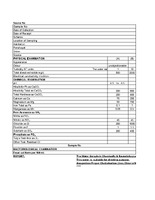 Water Sample results_Coonoor_April_2014
Water Sample results_Coonoor_April_2014 Coonoor area water sample result details.
-
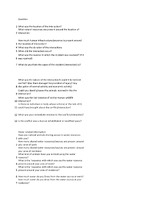 Human Wildlife Conflict_ Questionnaire
Human Wildlife Conflict_ Questionnaire In this document provides you the questions related human wildlife conflict .
-
 Water sample_Test report
Water sample_Test report The provided documents consist of multiple test reports detailing the analysis of water samples collected by Keystone Foundation. Each report includes information about the sample's characteristics, such as color, odor, taste, pH level, electrical conductivity, total dissolved solids, turbidity, hardness, and various chemical constituents like calcium, magnesium, chlorides, and nitrates. The results indicate that the samples generally meet acceptable standards for drinking water, with specific measurements provided for each characteristic compared against established limits.
-
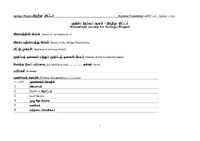 household survey format_V1
household survey format_V1 The document outlines a structured survey format for the Springs Project, developed by the Keystone Foundation, aimed at assessing various aspects of household water usage, sanitation, and health in Tamil-speaking communities. It includes sections for gathering information on water quality, sources, availability, and sanitation practices, as well as the impact of waterborne diseases on the population. The survey seeks to collect data on household demographics, landholding sizes, primary occupations, and methods of waste disposal, thereby providing a comprehensive understanding of the community's water-related challenges and needs.
-
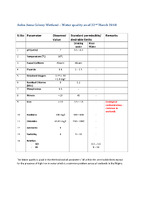 Water_Quality_Anbu Anna Colony_22_March_2018
Water_Quality_Anbu Anna Colony_22_March_2018 The document presents an assessment of water quality in the Anbu Anna Colony Wetland, highlighting various parameters measured on that date. It indicates that the water quality is generally good, with most parameters meeting the permissible limits for drinking and river water, except for elevated iron levels, which is a common issue in wetlands in the Nilgiris region. Key measurements include a pH of 7, a temperature of 16°C, and the absence of faecal coliform, while fluoride, dissolved oxygen, and turbidity levels also fall within acceptable ranges. Overall, the findings suggest that while the water quality is satisfactory, attention is needed regarding iron contamination.
-
 Sneh_Women's Day 2025
Sneh_Women's Day 2025 Snehlata Nath talks about the importance of equality, and the steps that have been made towards a gender just future as well as the distance we have yet to travel.
-
 Faseela_Women's Day 2025
Faseela_Women's Day 2025 V. Faseela talks about her work as an Additional Programme Coordinator with Keystone’s Community Wellbeing team, current inequality between men and women, and encourages women to pursue financial independence.
-
 Sangeswari_Women's Day 2025
Sangeswari_Women's Day 2025 Dr. Sangeswari Thirukumar talks about her work as a field coordinator Keystone’s Climate Change team, and why women deserve equality.
 Activites with instructions The document outlines a series of interactive group activities designed to promote teamwork, communication, and self-awareness among participants. Each activity includes specific instructions, durations, and discussion questions aimed at encouraging participants to explore their similarities and differences, enhance their observational skills, and engage in collaborative problem-solving. Activities range from physical tasks like the "Web of Wool," where teams must guide a blindfolded member to untangle a web, to reflective exercises such as the "Bubble Activity," where individuals identify personal characteristics. The document emphasizes the importance of understanding diversity and fostering positive interactions within groups through structured engagement.
Activites with instructions The document outlines a series of interactive group activities designed to promote teamwork, communication, and self-awareness among participants. Each activity includes specific instructions, durations, and discussion questions aimed at encouraging participants to explore their similarities and differences, enhance their observational skills, and engage in collaborative problem-solving. Activities range from physical tasks like the "Web of Wool," where teams must guide a blindfolded member to untangle a web, to reflective exercises such as the "Bubble Activity," where individuals identify personal characteristics. The document emphasizes the importance of understanding diversity and fostering positive interactions within groups through structured engagement. Appreciating Diversity_Activity The document outlines an interactive activity designed to help participants explore their similarities and differences through a physical exercise where they move closer or further apart based on their discoveries. It emphasizes the importance of recognizing both differences, such as physical traits, and similarities, which often relate to personal characteristics and preferences. The activity includes discussion questions aimed at fostering reflection on how these dynamics affect teamwork and collaboration, as well as a scoring system that rewards participants for various aspects of diversity, such as different birth states or languages spoken. This approach encourages participants to appreciate diversity while understanding its impact on group interactions and objectives.
Appreciating Diversity_Activity The document outlines an interactive activity designed to help participants explore their similarities and differences through a physical exercise where they move closer or further apart based on their discoveries. It emphasizes the importance of recognizing both differences, such as physical traits, and similarities, which often relate to personal characteristics and preferences. The activity includes discussion questions aimed at fostering reflection on how these dynamics affect teamwork and collaboration, as well as a scoring system that rewards participants for various aspects of diversity, such as different birth states or languages spoken. This approach encourages participants to appreciate diversity while understanding its impact on group interactions and objectives. Operational Manual for Domestic Organic Certification The PGS-India Operational Manual outlines the procedures and standards for establishing and maintaining Participatory Guarantee Systems (PGS) for organic farming in India. It emphasizes the importance of forming local groups of farmers who commit to organic practices, participate in peer reviews, and attend regular meetings to ensure compliance with organic standards. The manual details the steps for group registration, the roles of regional councils, and the certification process, which includes peer appraisals and the sharing of knowledge among members. It also highlights the necessity for farmers to convert their entire land and livestock to organic within a specified timeframe and provides guidelines for addressing non-compliance. Overall, the manual serves as a comprehensive guide for farmers to achieve and maintain organic certification through community involvement and mutual support.
Operational Manual for Domestic Organic Certification The PGS-India Operational Manual outlines the procedures and standards for establishing and maintaining Participatory Guarantee Systems (PGS) for organic farming in India. It emphasizes the importance of forming local groups of farmers who commit to organic practices, participate in peer reviews, and attend regular meetings to ensure compliance with organic standards. The manual details the steps for group registration, the roles of regional councils, and the certification process, which includes peer appraisals and the sharing of knowledge among members. It also highlights the necessity for farmers to convert their entire land and livestock to organic within a specified timeframe and provides guidelines for addressing non-compliance. Overall, the manual serves as a comprehensive guide for farmers to achieve and maintain organic certification through community involvement and mutual support. LAND USE ANALYSIS OF KOTAGIRI
CATHERINE WATERFALLS WATER
SHED AND KOOKALTHORAI STREAM
WATERSHED USING GOOGLE EARTH
IMAGERY (2012 2018) The document presents a study focused on analyzing land use changes in the Kotagiri and Kookalthorai areas of Tamil Nadu, utilizing Google Earth imagery and GIS tools from 2012 to 2018. The research aims to understand community perceptions regarding these changes, document traditional practices related to water sources, and assess the impact of tourism and agricultural practices on land use. Findings indicate a significant increase in built-up areas due to tourism, a reduction in tea cultivation, and a decrease in tree cover, alongside concerns about water availability and agricultural productivity. The study highlights the importance of community engagement and the use of modern mapping tools in environmental research.
LAND USE ANALYSIS OF KOTAGIRI
CATHERINE WATERFALLS WATER
SHED AND KOOKALTHORAI STREAM
WATERSHED USING GOOGLE EARTH
IMAGERY (2012 2018) The document presents a study focused on analyzing land use changes in the Kotagiri and Kookalthorai areas of Tamil Nadu, utilizing Google Earth imagery and GIS tools from 2012 to 2018. The research aims to understand community perceptions regarding these changes, document traditional practices related to water sources, and assess the impact of tourism and agricultural practices on land use. Findings indicate a significant increase in built-up areas due to tourism, a reduction in tea cultivation, and a decrease in tree cover, alongside concerns about water availability and agricultural productivity. The study highlights the importance of community engagement and the use of modern mapping tools in environmental research. Landuse / Land cover dynamics study in Nilgiris district part of Western Ghats, Tamilnadu The document presents a study on the dynamics of land use and land cover in the Nilgiris district of Tamil Nadu, focusing on changes from 1973 to 2009. It highlights significant transformations in land use patterns, particularly the increase in urban areas and the decline of agricultural and forest lands, attributed to factors such as population growth, commercialization, and climate change. The research employs remote sensing and GIS techniques to analyze these changes, revealing a notable rise in dense forest areas while open forests and agricultural lands have decreased. The findings emphasize the urgent need for effective land management strategies to address environmental degradation and ensure sustainable development in this ecologically sensitive region.
Landuse / Land cover dynamics study in Nilgiris district part of Western Ghats, Tamilnadu The document presents a study on the dynamics of land use and land cover in the Nilgiris district of Tamil Nadu, focusing on changes from 1973 to 2009. It highlights significant transformations in land use patterns, particularly the increase in urban areas and the decline of agricultural and forest lands, attributed to factors such as population growth, commercialization, and climate change. The research employs remote sensing and GIS techniques to analyze these changes, revealing a notable rise in dense forest areas while open forests and agricultural lands have decreased. The findings emphasize the urgent need for effective land management strategies to address environmental degradation and ensure sustainable development in this ecologically sensitive region. Springs_User Handbook_ACWADAM's This user handbook focuses on the management of springwater in mountainous regions, emphasizing the importance of hydrogeological science in understanding and protecting groundwater resources. It advocates for a community-based approach to springshed management, highlighting the need for local involvement in monitoring and maintaining recharge areas, which are determined by geological factors rather than administrative boundaries. The handbook outlines a systematic methodology for assessing spring discharge, classifying spring types, and developing management protocols that include protecting vegetation and ensuring clean recharge areas. It stresses the significance of educating local communities about the role of hydrogeology in sustaining springwater and the necessity of ongoing data collection to evaluate the impact of management practices on both water quality and community livelihoods.
Springs_User Handbook_ACWADAM's This user handbook focuses on the management of springwater in mountainous regions, emphasizing the importance of hydrogeological science in understanding and protecting groundwater resources. It advocates for a community-based approach to springshed management, highlighting the need for local involvement in monitoring and maintaining recharge areas, which are determined by geological factors rather than administrative boundaries. The handbook outlines a systematic methodology for assessing spring discharge, classifying spring types, and developing management protocols that include protecting vegetation and ensuring clean recharge areas. It stresses the significance of educating local communities about the role of hydrogeology in sustaining springwater and the necessity of ongoing data collection to evaluate the impact of management practices on both water quality and community livelihoods. Perception of people towards water usage The document presents findings from a survey regarding water usage and environmental concerns in a specific area. It highlights issues such as waste disposal methods, the impact of agricultural practices on water quality, and the presence of wildlife near water sources. Respondents reported changes in water availability and quality over the past decade, with many indicating an increase in both household and farm water usage. The survey also addresses the perception of bore wells, the occurrence of waterborne diseases, and the influence of local development on natural resources. Overall, it reflects community attitudes towards water management and environmental sustainability.
Perception of people towards water usage The document presents findings from a survey regarding water usage and environmental concerns in a specific area. It highlights issues such as waste disposal methods, the impact of agricultural practices on water quality, and the presence of wildlife near water sources. Respondents reported changes in water availability and quality over the past decade, with many indicating an increase in both household and farm water usage. The survey also addresses the perception of bore wells, the occurrence of waterborne diseases, and the influence of local development on natural resources. Overall, it reflects community attitudes towards water management and environmental sustainability. Kookalthorai Drinking water sources The Keystone Foundation provides an overview of the drinking water resources in Kookal and Kagguchi Town Panchayat, highlighting the critical need for restoration and management of these sources due to their depletion and contamination. It details the reliance of local communities on a limited number of wells and bore wells, which often run dry, especially during summer months, and discusses the adverse effects of invasive species and poor waste management on water quality. The report emphasizes the importance of conservation efforts, such as restoring spring-shed areas and improving infrastructure, to ensure a sustainable water supply for the residents. It also addresses the broader implications of groundwater depletion on the local ecosystem, including the impact on wildlife and the hydrological cycle, urging immediate action to mitigate these challenges.
Kookalthorai Drinking water sources The Keystone Foundation provides an overview of the drinking water resources in Kookal and Kagguchi Town Panchayat, highlighting the critical need for restoration and management of these sources due to their depletion and contamination. It details the reliance of local communities on a limited number of wells and bore wells, which often run dry, especially during summer months, and discusses the adverse effects of invasive species and poor waste management on water quality. The report emphasizes the importance of conservation efforts, such as restoring spring-shed areas and improving infrastructure, to ensure a sustainable water supply for the residents. It also addresses the broader implications of groundwater depletion on the local ecosystem, including the impact on wildlife and the hydrological cycle, urging immediate action to mitigate these challenges. World Toilet day_Coimbatore _Press release The press release announces the celebration of World Toilet Day in Coimbatore on November 21, organized by the Tamil Nadu Urban Sanitation Support Programme and Keystone Foundation, highlighting the importance of sanitation and access to clean toilets. This year's theme, "When Nature Calls," aims to raise awareness about the ecological issues caused by untreated human waste and emphasizes the need for proper fecal sludge management. A mobile campaign will engage the public by gathering their opinions on sanitation and promoting understanding of the sanitation value chain, which includes safe containment, collection, and treatment of waste. The initiative seeks to normalize discussions around sanitation, encouraging community involvement and awareness of its significance in daily life.
World Toilet day_Coimbatore _Press release The press release announces the celebration of World Toilet Day in Coimbatore on November 21, organized by the Tamil Nadu Urban Sanitation Support Programme and Keystone Foundation, highlighting the importance of sanitation and access to clean toilets. This year's theme, "When Nature Calls," aims to raise awareness about the ecological issues caused by untreated human waste and emphasizes the need for proper fecal sludge management. A mobile campaign will engage the public by gathering their opinions on sanitation and promoting understanding of the sanitation value chain, which includes safe containment, collection, and treatment of waste. The initiative seeks to normalize discussions around sanitation, encouraging community involvement and awareness of its significance in daily life. School Program Inaguration_NN_Press note The press note announces the inauguration of the School WASH Program by the Tamil Nadu Urban Sanitation Support Program (TNUSSP), which is supported by the Bill and Melinda Gates Foundation. This initiative aims to improve urban sanitation in Tamil Nadu, focusing on non-sewered sanitation and the safe management of fecal waste. A key component of the program is an awareness initiative in schools to educate children about water, sanitation, and hygiene (WASH) practices, promoting healthy behaviors. The program addresses the lack of access to safe water and adequate sanitation in many schools, with the goal of reaching the community through children. The inauguration event is scheduled for February 28, 2019, at the Periyanaickenpalayam Town Panchayat Office in Coimbatore, and the organizers invite media coverage and support for this important cause.
School Program Inaguration_NN_Press note The press note announces the inauguration of the School WASH Program by the Tamil Nadu Urban Sanitation Support Program (TNUSSP), which is supported by the Bill and Melinda Gates Foundation. This initiative aims to improve urban sanitation in Tamil Nadu, focusing on non-sewered sanitation and the safe management of fecal waste. A key component of the program is an awareness initiative in schools to educate children about water, sanitation, and hygiene (WASH) practices, promoting healthy behaviors. The program addresses the lack of access to safe water and adequate sanitation in many schools, with the goal of reaching the community through children. The inauguration event is scheduled for February 28, 2019, at the Periyanaickenpalayam Town Panchayat Office in Coimbatore, and the organizers invite media coverage and support for this important cause. Menstrual Hygiene Management Day 2019 The document discusses the significance of Menstrual Hygiene Management Day, celebrated on May 28, to raise awareness about the challenges women and girls face due to menstruation, which is often surrounded by stigma and misinformation. It highlights an exclusive health camp organized for women and adolescent girls in slums, where medical professionals provided consultations on menstrual hygiene and reproductive health, addressing common concerns such as irregular periods and the importance of a balanced diet. The document also emphasizes the negative impact of societal taboos on women's health and education, noting that many girls drop out of school when they begin menstruating due to inadequate sanitation facilities. Additionally, it touches on the environmental issues related to the disposal of sanitary products and the need for open discussions to empower women and girls regarding their menstrual health.
Menstrual Hygiene Management Day 2019 The document discusses the significance of Menstrual Hygiene Management Day, celebrated on May 28, to raise awareness about the challenges women and girls face due to menstruation, which is often surrounded by stigma and misinformation. It highlights an exclusive health camp organized for women and adolescent girls in slums, where medical professionals provided consultations on menstrual hygiene and reproductive health, addressing common concerns such as irregular periods and the importance of a balanced diet. The document also emphasizes the negative impact of societal taboos on women's health and education, noting that many girls drop out of school when they begin menstruating due to inadequate sanitation facilities. Additionally, it touches on the environmental issues related to the disposal of sanitary products and the need for open discussions to empower women and girls regarding their menstrual health. Health camp _karamadai _Press Note The document discusses a health camp organized for sanitation workers in Karamadai Town Panchayat, highlighting the health risks these workers face due to their exposure to unhygienic conditions and harmful gases while managing waste. It emphasizes the need for regular healthcare and monitoring to improve public health among this vulnerable group. The Tamil Nadu Urban Sanitation Support Programme (TNUSSP) has partnered with local hospitals to provide free medical camps, offering essential health services such as blood pressure and sugar level checks, which have benefited over 200 workers and their families. The success of these camps has encouraged other nearby towns to initiate similar health initiatives, reflecting a growing recognition of the importance of healthcare for sanitation workers.
Health camp _karamadai _Press Note The document discusses a health camp organized for sanitation workers in Karamadai Town Panchayat, highlighting the health risks these workers face due to their exposure to unhygienic conditions and harmful gases while managing waste. It emphasizes the need for regular healthcare and monitoring to improve public health among this vulnerable group. The Tamil Nadu Urban Sanitation Support Programme (TNUSSP) has partnered with local hospitals to provide free medical camps, offering essential health services such as blood pressure and sugar level checks, which have benefited over 200 workers and their families. The success of these camps has encouraged other nearby towns to initiate similar health initiatives, reflecting a growing recognition of the importance of healthcare for sanitation workers. Municipal Solid Waste Management Manuel_Part I,II,III The manuel outlines the challenges and strategies for managing municipal solid waste (MSW) in urban India, emphasizing the need for effective waste management systems due to the increasing urban population and waste generation. It discusses various funding sources for waste management, including government grants, public-private partnerships, and loans from development agencies, while highlighting the importance of stakeholder involvement and community participation in planning and implementation. The manual presents a structured approach to developing a municipal solid waste management plan, which includes assessing current situations, identifying gaps, and establishing clear action plans for waste collection, treatment, and disposal. It also emphasizes the significance of recycling, composting, and energy recovery from waste, alongside the integration of informal waste management sectors to enhance resource recovery and reduce environmental impacts. Overall, the document serves as a comprehensive guide for urban local bodies to improve their waste management practices and ensure sustainable urban development.
Municipal Solid Waste Management Manuel_Part I,II,III The manuel outlines the challenges and strategies for managing municipal solid waste (MSW) in urban India, emphasizing the need for effective waste management systems due to the increasing urban population and waste generation. It discusses various funding sources for waste management, including government grants, public-private partnerships, and loans from development agencies, while highlighting the importance of stakeholder involvement and community participation in planning and implementation. The manual presents a structured approach to developing a municipal solid waste management plan, which includes assessing current situations, identifying gaps, and establishing clear action plans for waste collection, treatment, and disposal. It also emphasizes the significance of recycling, composting, and energy recovery from waste, alongside the integration of informal waste management sectors to enhance resource recovery and reduce environmental impacts. Overall, the document serves as a comprehensive guide for urban local bodies to improve their waste management practices and ensure sustainable urban development. Solid Waste Management_Supreme Court Report_March_99 The document outlines comprehensive recommendations for improving solid waste management in urban areas, emphasizing the need for organized waste collection, segregation, and processing. It suggests implementing door-to-door collection systems, utilizing NGOs and private sector participation to enhance efficiency, and establishing designated disposal sites for hazardous waste. The report also highlights the importance of community involvement, proper training for waste management personnel, and the adoption of environmentally friendly practices like vermi-composting. Furthermore, it calls for local bodies to adopt simple technologies and set achievable standards to gradually improve waste management services over time, ensuring that municipalities can meet the needs of their communities effectively.
Solid Waste Management_Supreme Court Report_March_99 The document outlines comprehensive recommendations for improving solid waste management in urban areas, emphasizing the need for organized waste collection, segregation, and processing. It suggests implementing door-to-door collection systems, utilizing NGOs and private sector participation to enhance efficiency, and establishing designated disposal sites for hazardous waste. The report also highlights the importance of community involvement, proper training for waste management personnel, and the adoption of environmentally friendly practices like vermi-composting. Furthermore, it calls for local bodies to adopt simple technologies and set achievable standards to gradually improve waste management services over time, ensuring that municipalities can meet the needs of their communities effectively. Final Guidelines on Buffer Zone This document, published by the Central Pollution Control Board in April 2017, outlines the necessary provisions for establishing buffer zones around solid waste processing and disposal facilities in India. It emphasizes the importance of maintaining a no-development zone to minimize environmental and public health risks associated with waste management operations. The guidelines define key terms such as buffer zone, separation distance, and green belt, and recommend specific distances and land use practices to ensure effective waste management while addressing community concerns. Additionally, the document highlights the regulatory framework guiding these practices and the need for local authorities to collaborate with pollution control boards to implement these guidelines effectively, ultimately aiming to enhance the aesthetic appeal and operational safety of waste management facilities.
Final Guidelines on Buffer Zone This document, published by the Central Pollution Control Board in April 2017, outlines the necessary provisions for establishing buffer zones around solid waste processing and disposal facilities in India. It emphasizes the importance of maintaining a no-development zone to minimize environmental and public health risks associated with waste management operations. The guidelines define key terms such as buffer zone, separation distance, and green belt, and recommend specific distances and land use practices to ensure effective waste management while addressing community concerns. Additionally, the document highlights the regulatory framework guiding these practices and the need for local authorities to collaborate with pollution control boards to implement these guidelines effectively, ultimately aiming to enhance the aesthetic appeal and operational safety of waste management facilities. Tamil Nadu Urban Sanitation Support Program_SKCAS_VM The document discusses the critical importance of sanitation, which encompasses the safe management of human waste and solid waste, including hazardous materials. It highlights the severe health implications of inadequate sanitation, noting that poor sanitation contributes to diseases such as cholera and diarrhea, and is linked to malnutrition, with millions lacking basic sanitation facilities. The document outlines the components of a full cycle sanitation system, emphasizing the need for safe toilet usage, effective waste treatment, and the prevention of groundwater contamination. It also references legislative measures aimed at improving sanitation practices and reducing manual scavenging, underscoring the collaborative efforts of organizations like the Bill and Melinda Gates Foundation and the Tamil Nadu government in addressing these challenges.
Tamil Nadu Urban Sanitation Support Program_SKCAS_VM The document discusses the critical importance of sanitation, which encompasses the safe management of human waste and solid waste, including hazardous materials. It highlights the severe health implications of inadequate sanitation, noting that poor sanitation contributes to diseases such as cholera and diarrhea, and is linked to malnutrition, with millions lacking basic sanitation facilities. The document outlines the components of a full cycle sanitation system, emphasizing the need for safe toilet usage, effective waste treatment, and the prevention of groundwater contamination. It also references legislative measures aimed at improving sanitation practices and reducing manual scavenging, underscoring the collaborative efforts of organizations like the Bill and Melinda Gates Foundation and the Tamil Nadu government in addressing these challenges. Tamil Nadu Urban Sanitation Support Program This presentation focuses on the Tamil Nadu Urban Sanitation Support Program, outlining the sanitation value chain, which includes user interfaces, containment, collection, treatment, and disposal of waste. It discusses the importance of safe toilet usage, the prohibition of manual scavenging, and various treatment systems, highlighting a proposed Faecal Sludge Treatment Plant (FSTP) model designed to handle up to 22,000 liters of fecal sludge daily, benefiting a population of 50,000. The presentation emphasizes the need for safe practices in waste disposal and reuse, aiming to prevent illegal dumping and promote the generation of treated wastewater and composted sludge.
Tamil Nadu Urban Sanitation Support Program This presentation focuses on the Tamil Nadu Urban Sanitation Support Program, outlining the sanitation value chain, which includes user interfaces, containment, collection, treatment, and disposal of waste. It discusses the importance of safe toilet usage, the prohibition of manual scavenging, and various treatment systems, highlighting a proposed Faecal Sludge Treatment Plant (FSTP) model designed to handle up to 22,000 liters of fecal sludge daily, benefiting a population of 50,000. The presentation emphasizes the need for safe practices in waste disposal and reuse, aiming to prevent illegal dumping and promote the generation of treated wastewater and composted sludge. Water Sample results_Coonoor_April_2014 Coonoor area water sample result details.
Water Sample results_Coonoor_April_2014 Coonoor area water sample result details. Human Wildlife Conflict_ Questionnaire In this document provides you the questions related human wildlife conflict .
Human Wildlife Conflict_ Questionnaire In this document provides you the questions related human wildlife conflict . Water sample_Test report The provided documents consist of multiple test reports detailing the analysis of water samples collected by Keystone Foundation. Each report includes information about the sample's characteristics, such as color, odor, taste, pH level, electrical conductivity, total dissolved solids, turbidity, hardness, and various chemical constituents like calcium, magnesium, chlorides, and nitrates. The results indicate that the samples generally meet acceptable standards for drinking water, with specific measurements provided for each characteristic compared against established limits.
Water sample_Test report The provided documents consist of multiple test reports detailing the analysis of water samples collected by Keystone Foundation. Each report includes information about the sample's characteristics, such as color, odor, taste, pH level, electrical conductivity, total dissolved solids, turbidity, hardness, and various chemical constituents like calcium, magnesium, chlorides, and nitrates. The results indicate that the samples generally meet acceptable standards for drinking water, with specific measurements provided for each characteristic compared against established limits. household survey format_V1 The document outlines a structured survey format for the Springs Project, developed by the Keystone Foundation, aimed at assessing various aspects of household water usage, sanitation, and health in Tamil-speaking communities. It includes sections for gathering information on water quality, sources, availability, and sanitation practices, as well as the impact of waterborne diseases on the population. The survey seeks to collect data on household demographics, landholding sizes, primary occupations, and methods of waste disposal, thereby providing a comprehensive understanding of the community's water-related challenges and needs.
household survey format_V1 The document outlines a structured survey format for the Springs Project, developed by the Keystone Foundation, aimed at assessing various aspects of household water usage, sanitation, and health in Tamil-speaking communities. It includes sections for gathering information on water quality, sources, availability, and sanitation practices, as well as the impact of waterborne diseases on the population. The survey seeks to collect data on household demographics, landholding sizes, primary occupations, and methods of waste disposal, thereby providing a comprehensive understanding of the community's water-related challenges and needs. Water_Quality_Anbu Anna Colony_22_March_2018 The document presents an assessment of water quality in the Anbu Anna Colony Wetland, highlighting various parameters measured on that date. It indicates that the water quality is generally good, with most parameters meeting the permissible limits for drinking and river water, except for elevated iron levels, which is a common issue in wetlands in the Nilgiris region. Key measurements include a pH of 7, a temperature of 16°C, and the absence of faecal coliform, while fluoride, dissolved oxygen, and turbidity levels also fall within acceptable ranges. Overall, the findings suggest that while the water quality is satisfactory, attention is needed regarding iron contamination.
Water_Quality_Anbu Anna Colony_22_March_2018 The document presents an assessment of water quality in the Anbu Anna Colony Wetland, highlighting various parameters measured on that date. It indicates that the water quality is generally good, with most parameters meeting the permissible limits for drinking and river water, except for elevated iron levels, which is a common issue in wetlands in the Nilgiris region. Key measurements include a pH of 7, a temperature of 16°C, and the absence of faecal coliform, while fluoride, dissolved oxygen, and turbidity levels also fall within acceptable ranges. Overall, the findings suggest that while the water quality is satisfactory, attention is needed regarding iron contamination. Sneh_Women's Day 2025 Snehlata Nath talks about the importance of equality, and the steps that have been made towards a gender just future as well as the distance we have yet to travel.
Sneh_Women's Day 2025 Snehlata Nath talks about the importance of equality, and the steps that have been made towards a gender just future as well as the distance we have yet to travel. Faseela_Women's Day 2025 V. Faseela talks about her work as an Additional Programme Coordinator with Keystone’s Community Wellbeing team, current inequality between men and women, and encourages women to pursue financial independence.
Faseela_Women's Day 2025 V. Faseela talks about her work as an Additional Programme Coordinator with Keystone’s Community Wellbeing team, current inequality between men and women, and encourages women to pursue financial independence. Sangeswari_Women's Day 2025 Dr. Sangeswari Thirukumar talks about her work as a field coordinator Keystone’s Climate Change team, and why women deserve equality.
Sangeswari_Women's Day 2025 Dr. Sangeswari Thirukumar talks about her work as a field coordinator Keystone’s Climate Change team, and why women deserve equality.